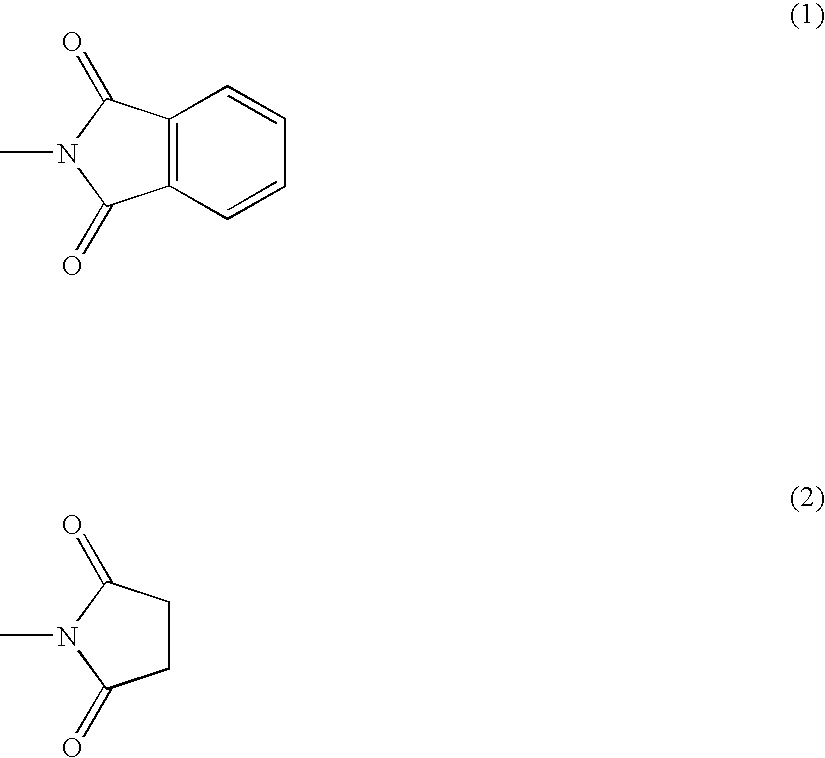Resin composition and method for producing the same
a technology of resin composition and composition method, which is applied in the field of resin composition, can solve the problems of difficult molding, difficult to continue molding, cracks in the resin composition, etc., and achieve the effects of preventing the oxidation of the resin composition, reducing the production cost, and improving the effect of the effect of the effect of the composition
- Summary
- Abstract
- Description
- Claims
- Application Information
AI Technical Summary
Benefits of technology
Problems solved by technology
Method used
Image
Examples
example 1
Production of Polyamide Resin B-1
[0154]A 30-liter pressure-proof reactor was charged with 10 kg of ε-caprolactam as a monomer, as a molecular weight modifier, 82 g of 1,6-hexanediamine, and 1.0 kg of water; the mixture was heated to 260° C. with it being stirred and the pressure was increased to 0.5 MPa. Thereafter, the pressure was released to normal pressure, and polymerization was performed at 260° C. for 3 hours. Upon completing the polymerization, the reaction product was formed in strands, was cooled to solidify, and was then cut into pellets. The obtained pellets were washed with a 95° C. hot water, followed by drying, and a polyamide resin C-1 was obtained. The relative viscosity of this resin was 2.7. The amount of terminal amino group was 81 μeq / g, the amount of terminal carboxylic acid was 16 μeq / g, and the proportion of terminal amino group was 84%. These results are shown in Table 1.
[0155]5 kg of the polyamide resin C-1 were dry blended with 80 g of phthalic anhydride a...
example 2
Production of Polyamide Resin B-2
[0156]A polyamide resin C-2 was obtained in the same manner as in Example 1 except that the amount of 1,6-hexanediamine was 75g. A polyamide resin B-2 was obtained in the same manner as in Example 1 except that the polyamide resin C-2 used was in place of C-1 and the terminal-blocking agent (D) used was 50.1 g of succinic anhydride.
example 3
[0165]Eval F101 made by Kuraray (ethylene content: 32 mol %, saponification degree: 99.9%, MFI: 1.5 g / 10 minutes (190° C., 2160 g)) was used as the EVOH (A), and the polyamide resin B-1 was used as the polyamide resin (B). These were dry blended at a weight ratio of 90:10 and charged into an extruder equipped with a full-flight type screw, which has a diameter of 40 mm, an L / D ratio of 24, and a compression ratio of 3.8, and using a flat die having a width of 550 mm, a film formation was carried out. The temperatures for the film formation were 190° C. to 240° C. with the extruder and 225° C. with the die. A film having a thickness of 15 μm was wound up with a winding machine, and a continuous film-forming operation was carried out for 24 hours. Twenty-four hours later, the obtained film was subjected to a measurement of oxygen transmission rate, a film surface evaluation, and an appearance assessment after hot water treatment, in accordance with the following methods. The results a...
PUM
| Property | Measurement | Unit |
|---|---|---|
| mol % | aaaaa | aaaaa |
| mol % | aaaaa | aaaaa |
| absolute temperatures | aaaaa | aaaaa |
Abstract
Description
Claims
Application Information
 Login to View More
Login to View More - R&D
- Intellectual Property
- Life Sciences
- Materials
- Tech Scout
- Unparalleled Data Quality
- Higher Quality Content
- 60% Fewer Hallucinations
Browse by: Latest US Patents, China's latest patents, Technical Efficacy Thesaurus, Application Domain, Technology Topic, Popular Technical Reports.
© 2025 PatSnap. All rights reserved.Legal|Privacy policy|Modern Slavery Act Transparency Statement|Sitemap|About US| Contact US: help@patsnap.com


